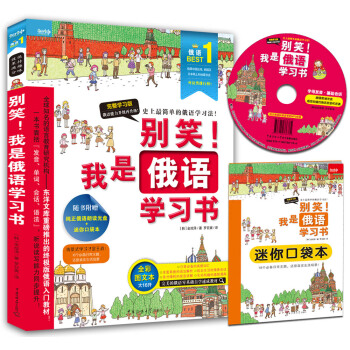

具体描述
产品特色
编辑推荐
适读人群 :准备参加雅思考试的考生以及想提高英语水平的读者《新东方雅思听力》汇集了新东方雅思培训经验的精华,新东方及国际知名雅思专家强强联手,倾力打造符合中国雅思考生学习特点的培训教材。由资深国际语言专家RodEllis亲自作序,并担任总顾问,对教材编写予以指导;新东方教育科技集团雅思研究院院长周成刚亲自审订。
《新东方雅思听力》根据雅思考试新趋势,全面覆盖雅思考试各种题型,提供多样练习形式及技巧点拨,供考生短时高效备考。既可以作为课堂培训使用,也可以作为考生自学使用,配合剑桥雅思真题学习,效果更佳。
内容简介
《新东方雅思听力》收录了雅思写作考试涉及的核心话题,结合考试流程进行讲解,详细介绍了雅思写作考试的写作策略和技巧。《新东方雅思听力》共有20个单元,全面覆盖雅思考试写作部分的各种题型。收录雅思考试写作部分的常见话题,每个单元中还归纳了相关词汇,总结语法知识,详解答题技巧。不仅提供了多样的练习及技巧点拨,帮助考生高效备考;还提供范文,有效提高考生的写作水平。
作者简介
新东方教育科技集团雅思研究院,由众多新东方雅思名师组成,致力于雅思考试的研究工作,著有《雅思写作》、《雅思听力》、《雅思阅读》、《雅思口语》等多本畅销图书。目录
Unit 0 Introduction
Unit 1 Fast Food
Unit 2 Sport
Unit 3 Media
Unit 4 Youth Issues: Computer Use
Unit 5 Education: Study Abroad
Unit 6 Advertising
Unit 7 Education: Schools
Unit 8 Environment
Unit 9 Food
Unit 10 Censorship
Unit 11 Transport
Unit 12 Leisure Activities
Unit 13 Technology
Unit 14 Money and Finance
Unit 15 Youth Issues
Unit 16 Commodities and Manufactured Goods
Unit 17 Social Issues: Population
Unit 18 International Events
Unit 19 Technology: Communication
Unit 20 Environment: Tourism
Vocabulary Bank
Answer Key
前言/序言
Overview (概论)We hope you will enjoy using this book, and that you will learn useful language and skills to help you to pass the IELTS writing test. This book covers the following points:
Grammar—this matches to ‘Grammar’ in the IELTS marking criteria.
Useful and common grammar that you will need to successfully complete both Task 1 and Task 2 IELTS writing scripts:
For example:
The most common verb tenses and how and where to use them
Correct grammar structures for comparing, evaluating, discussing and giving opinions
Correct use of prepositions to talk about numbers, times and dates
Linking Ideas and Organising your Writing – this matches to ‘Coherence’ in the IELTS marking criteria.
For example:
Useful and common ways to link ideas in sentences and between paragraphs
Ways to avoid repeating information in your writing
Writing clear topic sentences for paragraphs
Writing clear introductions and conclusions
Vocabulary – this matches to ‘Vocabulary’ in the IELTS marking criteria.
Useful and common words for both Task 1 and Task 2 writing:
Task 1 – vocabulary for writing about trends, changes, percentages, data, etc
Task 2 – topic related vocabulary for common IELTS Task 2 topics
Content and language for common IELTS topics – this matches to ‘Task Achievement’ in IELTS Task 1 marking criteria and ‘Task Response’ in Task 2 marking criteria.
Task 1 – writing an overview of the chart, clearly describing data
Task 2 – becoming aware of the different IELTS writing types, such as comparing, evaluating or giving your opinion, and learning useful language for the different types of essay
Work hard, practise at home, enjoy your study and succeed in the IELTS writing test!
序一:
Dear Student
Welcome to this New Oriental IELTS preparation course and the Writing Book in particular.
IELTS, the International English Language Testing System, is one of the world’s most popular English language tests for entry into university or higher education where English is the language of communication. In other words, it is your academic passport!
One of the most difficult challenges you will face in Academic Writing Test is being able to respond to the Task 1 and the Task 2 questions appropriately. In this book you will be guided to produce the kind of writing that is required.
Grammar is very important. You will learn the most common verbs and how to use them as well as the correct grammatical structures for the various language functions that you will need to answer Task 1 (comparing, contrasting, etc) and Task 2 (evaluating, discussing, giving opinions, etc).
You will learn how to link your ideas together fluently and how to organise your writing into coherent paragraphs.
Specific vocabulary is targeted for Task 1 to enable you to write about data, trends and changes. In addition, typical vocabulary related to common Task 2 topics is introduced.
As you work through this book you will become aware of how to respond appropriately, accurately and relevantly to the requirements set out in the different IELTS writing tasks.
Congratulations on choosing to study IELTS with New Oriental where the teaching team will be helping you to develop confidence and the ability to communicate in English with greater fluency.
Ready? Let’s go!
Rod Ellis
第二语言教学之父
“Task Base”教学法创始人
序二:
Dear Student,
Thank you for choosing to study for the IELTS with New Oriental.
This book is the long anticipated result of a close cooperation between New Oriental and international IELTS experts to develop our own IELTS training materials. We believe it offers a different approach, with the following features:
First of all, the language used is likely what you will encounter in a real classroom or work setting while living abroad. The setting of each dialogue is also consistent with how you might encounter English as used by native speakers in their own country.
Also, under the guidance of renowned professor Rod Ellis, our partner international research team has delivered a proven methodology for ensuring the intended acquisition of needed skills for IELTS test takers in speaking, listening, reading and writing.
And most importantly, this book incorporates ten years of IELTS training experience by the very best teachers at New Oriental, and therefore has been customized to suit the needs of Chinese students.
I sincerely hope that together with these materials New Oriental teachers can make your IELTS classroom fruitful and rewarding. Enjoy your learning time with New Oriental!
周成刚
新东方教育科技集团
用户评价
我对这本书的整体评价,倾向于“过时且冗余”。我注意到很多例句和场景设计,似乎停留在五六年前雅思考试的风格里。举个例子,关于“校园设施介绍”的听力场景,它里面的描述还充斥着对老式电话亭或者需要特定钥匙才能进入的公共区域的提及,这在当前以在线预约和数字化管理为主流的大学环境中,已经显得有些脱节了。现代雅思听力更侧重于对数字信息(如课程代码、账户信息、时间表变动)的快速捕捉和记录,以及对复杂学术观点的逻辑梳理。这本书在对这些“新趋势”的反应上显得极其迟钝。它似乎没有紧跟近两年雅思官方题库的更新脉络,依然在重复一些已经被考频降低的固定搭配和场景。购买一本应试材料,追求的就是效率和时效性,花大价钱买一本内容更新缓慢、配套设施陈旧的资料,无疑是备考路上的一个弯路。我最终还是决定将其束之高阁,转而依赖于更贴近当下考试难度的模拟测试集进行针对性训练。
评分坦白说,这本书给我的体验,完全是一种“二手经验”的堆砌感。我理解新东方有庞大的师资力量,但这本书的编撰似乎更像是一个初级培训师的笔记汇编,而非资深教研团队的结晶。它在技巧讲解上,总是喜欢用一些非常笼统的词汇来描述复杂的听力现象,比如“注意转折词的敏感性”、“保持语境的连贯捕捉”。这些话,任何一本免费的备考指南上都能找到,而且表述得更精炼。真正有价值的,是那种对具体语境下特定连读、弱读、或者同音词替换的精准捕捉和案例分析,这本书在这方面做得远远不够。我翻阅了其中关于地图题和配对题的章节,它给出的策略都是那种教科书式的、放之四海而皆准的步骤,但实战中,往往是那电光火石之间的一个不定冠词或一个介词的变化决定了对错,这些细微差别,这本书几乎没有提供任何有效的“预警系统”。对我而言,备考雅思听力就像是学习游泳,我需要教练指出水下的暗流和漩涡,而不是只告诉我“你需要换气”。这本书给我的感觉,就是一本泛泛而谈的游泳说明书,而不是一位经验老道的私人教练。
评分如果非要给这本书找一个“优点”,那就是它的“厚度”给了人一种错觉上的充实感。我买了它之后,确实感觉自己的备考书架上多了一个有分量的家伙。但这种充实感很快就被使用后的空虚感取代了。特别是针对听力填空题的训练部分,它给出的训练材料,其难度曲线设计得非常不合理。前几部分简单到像是初中英语听力测验,几乎不需要动脑子就能轻松拿满分,这很容易让人产生一种“我听力很强”的错觉。然而,当你进入后半部分的Section 4时,题目的逻辑跳跃性和词汇的难度陡然上升,但相应的配套解析和词汇提示却戛然而止。这种极端的难度梯度变化,没有平滑的过渡和有效的缓冲,对于状态不稳定的考生来说,很容易造成信心崩塌。一个好的学习材料,应该像一位循序渐进的老师,稳步提升学习者的能力,而不是像一个跳台,让你在平地之后直接面对悬崖。这种教材编排上的缺陷,严重影响了它作为系统学习工具的价值。
评分这本所谓的“新东方雅思听力”书,说实话,我拿到手的时候心里就打了个问号。封面设计得倒是挺有冲击力,那种熟悉的橘红色调,让人一看就知道是“新东方出品”,但翻开内页,那种期望值瞬间就掉到了谷底。首先,我得提一下它的排版问题。清晰度是其次,关键是信息的组织方式,简直是一团乱麻。它试图把基础词汇、技巧讲解和真题模拟硬塞进有限的空间里,结果就是内容密度过高,呼吸感全无。读起来非常吃力,就像在走一条没有指示牌的迷宫。我花了整整一个下午试图搞清楚它所谓的“三段式听力解构法”到底是个什么原理,结果发现,所谓的“方法论”与其说是方法,不如说是一些零散的、未经有效串联的经验总结。更别提那些所谓的“高频词汇表”,很多词汇的出现频率和重要性排序完全不符合我过去半年刷题的实际感受。我更倾向于相信那些标注了具体年份和类别的官方真题集,而不是这种“一揽子”塞给你,却缺乏系统梳理的资料。对于一个目标是冲刺七分以上的考生来说,这本书提供的“知识密度”和“实战价值”严重不成正比,更多的是一种心理安慰,让你觉得“我买了一本很厚的听力书”,但真正拿起笔去模考时,却发现很多关键的得分点和陷阱预警它都没有触及,留下的只有对时间和金钱的双重惋惜。
评分拿到这本书,最大的感受就是“用力过猛,但方向有点偏”。我本来是想找一本能够有效提升我对不同口音适应性,并且能在Section 3和Section 4这类学术听力部分有所突破的教材。结果,这本书似乎更侧重于基础入门阶段的场景构建,比如点餐、问路这类A类场景的重复轰炸。当然,基础重要,但我已经过了需要花大量篇幅去辨认“Where is the library?”这种程度的阶段了。更让人抓狂的是配套的MP3光盘。是的,光盘,在这个时代,这本身就已经是落后于时代的一个信号了。连接电脑,找到播放器,确认音质,这一套流程下来已经耗费了我不少耐心。更糟糕的是,光盘里的录音质量参差不齐,有些段落的背景音(那个模拟考试环境的“嘶嘶”声)干扰性极强,反而影响了对正常语速和清晰度的判断。我不得不自己动手把音轨分离出来,单独处理。说实话,现在市面上很多在线资源或者App的学习体验都比这个光盘要流畅得多。如果一本听力材料的“辅助工具”都如此拖后腿,那么它在内容上的精妙性就更值得怀疑了。它更像是一份将旧版培训班讲义简单粗暴地装订成册的版本,缺乏现代考试对听力理解深度的挖掘。
评分为孩子准备的雅思辅导书,帮助词汇练习
评分不错不错不错不错不错不错不错不错
评分东西很好,值得回购,送货特别快,价格优势明显。活动价特别给力。
评分不错吧,听起来也可以,感觉就是可能还是有点不太像考试中的听力哈哈哈哈哈哈哈哈哈哈哈哈哈
评分爱网购,,因为方便快捷,质量也挺好的。小到生活日用品、食品,大到手机数码大家电都在jd买买买。每天逛京东就像逛街?由于经常买,订单多,就不一一评价了,好评都统一用此评语……?
评分好书,雅思词汇学习好帮手,值得购买!
评分好好好好好好好好好好
评分不错吧,听起来也可以,感觉就是可能还是有点不太像考试中的听力哈哈哈哈哈哈哈哈哈哈哈哈哈
评分其他不错
相关图书
本站所有内容均为互联网搜索引擎提供的公开搜索信息,本站不存储任何数据与内容,任何内容与数据均与本站无关,如有需要请联系相关搜索引擎包括但不限于百度,google,bing,sogou 等
© 2025 book.cndgn.com All Rights Reserved. 新城书站 版权所有









![80天攻克雅思(阅读 第四版) [Ielts In 80 Days: Reading] pdf epub mobi 电子书 下载](https://pic.qciss.net/12013570/57b44265Nfecdecde.jpg)
![学生实用高中英语语法指南与实践(第8版) [With Exercises for Senior Middle School Students] pdf epub mobi 电子书 下载](https://pic.qciss.net/11479043/53a6327fNbc46145f.jpg)









